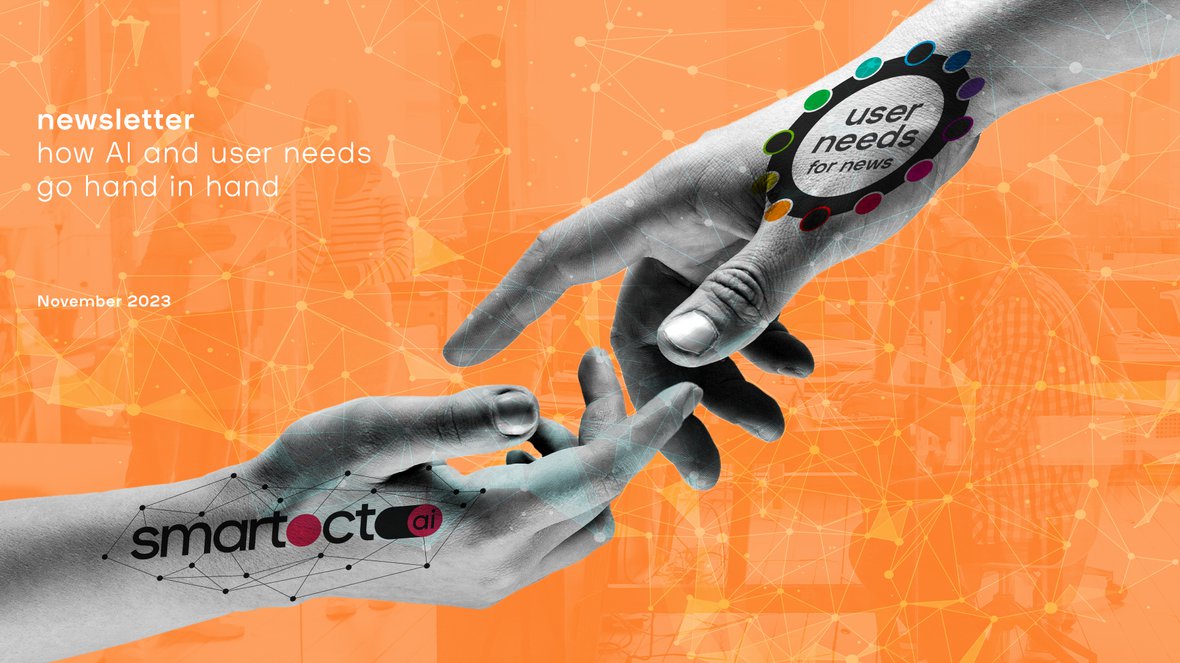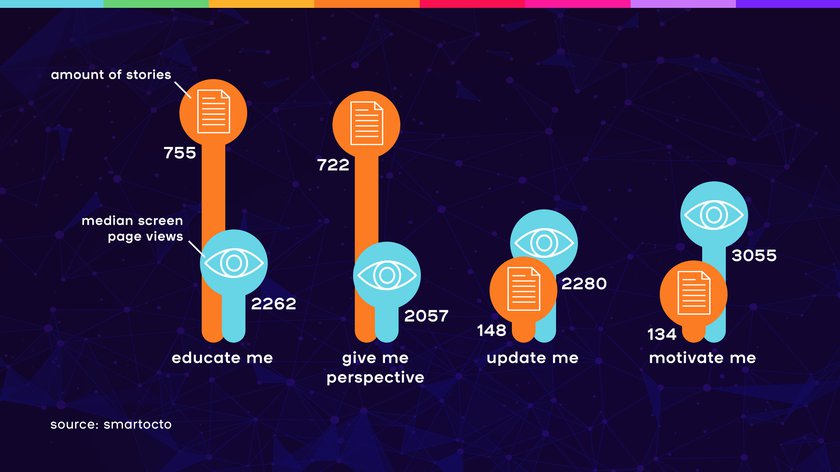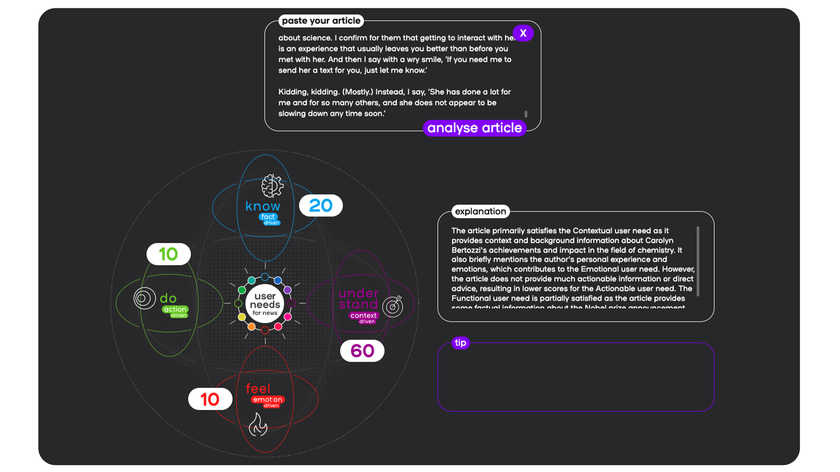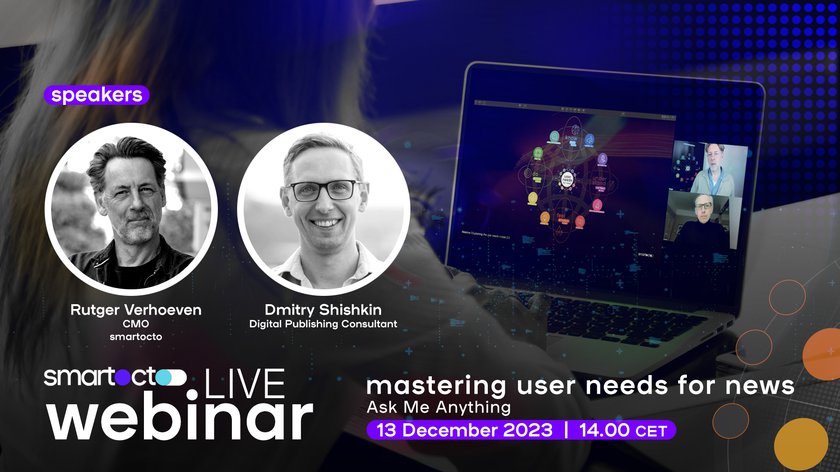Hey there,
Decision-makers at almost all media companies are currently busy with their plans and budgets for 2024. It will be interesting to see what they (and maybe you) decide to do with artificial intelligence.
Investment choices must go hand in hand with strategy and policy. Higher operating costs mean that you might only be able to spend money once, and all media companies naturally want to be just ahead of their competition. That's why, at smartocto, we mention user needs and artificial intelligence in the same breath, as it's crucial to be clear about the needs your AI tools will address.
- This is reflected in the stories our content team has been working on over the past few weeks. A client case with The Conversation highlights the importance of determining how your media brand differentiates itself from others.
- We tell the story behind the (currently free) tool we launched, userneeds.smartocto.com
- And we announce a webinar where Dmitry Shishkin and Rutger Verhoeven will answer all your burning questions about user needs. It’s a unique opportunity because, in the new year, Dmitry will start a new position as CEO of Ringier Media International. Presumably, he'll be a bit harder to catch then...
- You might have missed the webinar from two weeks ago. Smartocto’s very own CEO, Erik van Heeswijk, talked about the exciting developments around smartocto.ai, a technology that can lead to huge technological advances. Make sure to check that one too.
CLIENT CASE
"Smartocto helped us focus on the right metrics during our user needs research. We had the content experience; smartocto is the data expert and had all the tools we needed to visualise what was happening on our website."
The Conversation’s Khalil A. Cassimally shares his struggles and insights in a new client success story.
All successful media brands have their own set of user needs which enable them to better connect with their audience and enhance their sites' performance. The Conversation UK demonstrates how they realised that brand-specific user needs are essential.
"It's not about using the eight user needs we've devised, although I think the brand-specific ones are always linked to those," says Dmitry Shishkin in the client case. "Rather it’s about using that framework to strategically guide the journalistic process and be consistent in adhering to it."



